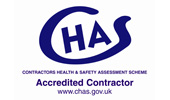Floor Screed Thickness?
What Floor Screed Thickness Do You Need?
I’m Andy Parkin, Managing Director of the Multi Award-Winning Speed Screed. Let us take a look at floor screed thickness.
We are often asked:
- What thickness do I need?
- What thickness can I go down to?
- What is the thinnest?
- What is the maximum?”
We need to put it into the context of the three main types of construction that you are likely to encounter when looking at floor screed thickness.
Bonded
First of all, you have got bonded. That is where the screed is actually bonded directly to the substrate.
Unbonded
Unbonded, this is where the substrate has a membrane separating it from the screed.
Floating
And then floating. That is where you have got acoustic or thermal insulation in between the screed and the substrate, and you may also have a membrane as well.
If we look at each different type, you’re going to have different floor screed thickness on the minimum and maximum depths.
Bonded Screed Minimum Depth
- When bonding directly to the substrate with a bonding agent or a primer the minimum is 1-2mm (feather edge) with smoothing compound
- Modified sand and cement screed can start at 10mm, that is for a rapid strength and fast-drying product
- Traditional sand and cement such as a 1:4 ratio could be bonded at 40mm
Bonded Screed Maximum Depth
- The maximum depth you would use a smoothing compound would generally be around out 10mm, you can add aggregates, to bulk up the screed going up to 30, 40, 50+mm. If you are getting up to the 50mm, you would question whether you want to use a smoothing product really just from an economic point of view, because it is going to be very expensive. There are far more cost effective alternatives products out there.
- Modified sand and cement screeds can go up to whatever thickness you would like, however you would question doing so, if you are starting to get up to 150mm, 200mm. At those kind of depths, you would using void formers (insulation and then screed on top).
It is rare that you will see screeds going in above 150 mm, however it is theoretically possible, providing it is compacted in layers. It is possible, but you would question as to why you would want to do that. - Traditional sand and cement is the same as above and doesn’t have an upper limit as such, but you would question anything too thick.
Unbonded Minimum
- Smoothing compound 50mm
- Calcium sulphate flowing screed 15mm (specialist version), 30mm standard
- Modified sand and cement 35mm
- Traditional sand and cement 50mm
Unbonded Maximum
- Smoothing compound I would suggest the maximum and minimum would be about the limit
- Calcium sulphate would be 80mm
- Modified sand and cement no limits as before, but question if too thick
- Traditional sand and cement no limits as before, but question if too thick
Floating Minimum
- Smoothing compound not generally suitable
- Calcium sulphate flowing screed 35mm domestic and 40mm commercial
- Modified sand and cement 35mm
- Traditional sand and cement 65mm domestic and 75mm commercial
Floating Maximum
- Smoothing compound not generally suitable
- Calcium sulphate anything above 80mm is liable to bleed which increases the probability of a softer surface that will need to be removed. So the manufacturers recommend no more than 80mm.
- Modified sand and cement no limits as before, but question if too thick
- Traditional sand and cement no limits as before, but question if too thick
I hope that gives you an idea of the thicknesses you can start at, and you can go up to. But please feel free to contact us for any further advice.
Our Accreditations
About Speed Screed
Speed Screed Limited was founded on the key principle of providing first-class customer service. It has since built itself an impressive reputation for delivering high-quality projects across the United Kingdom.
The company’s success is built on its belief in quality work, attention to detail, on-time completion, strong working partnerships and the recruitment of top-level staff. about us >








